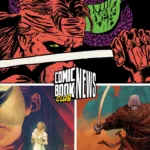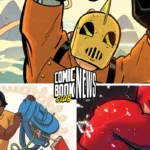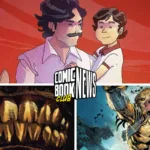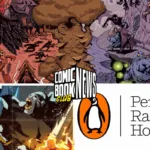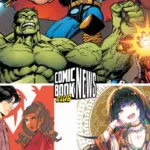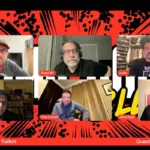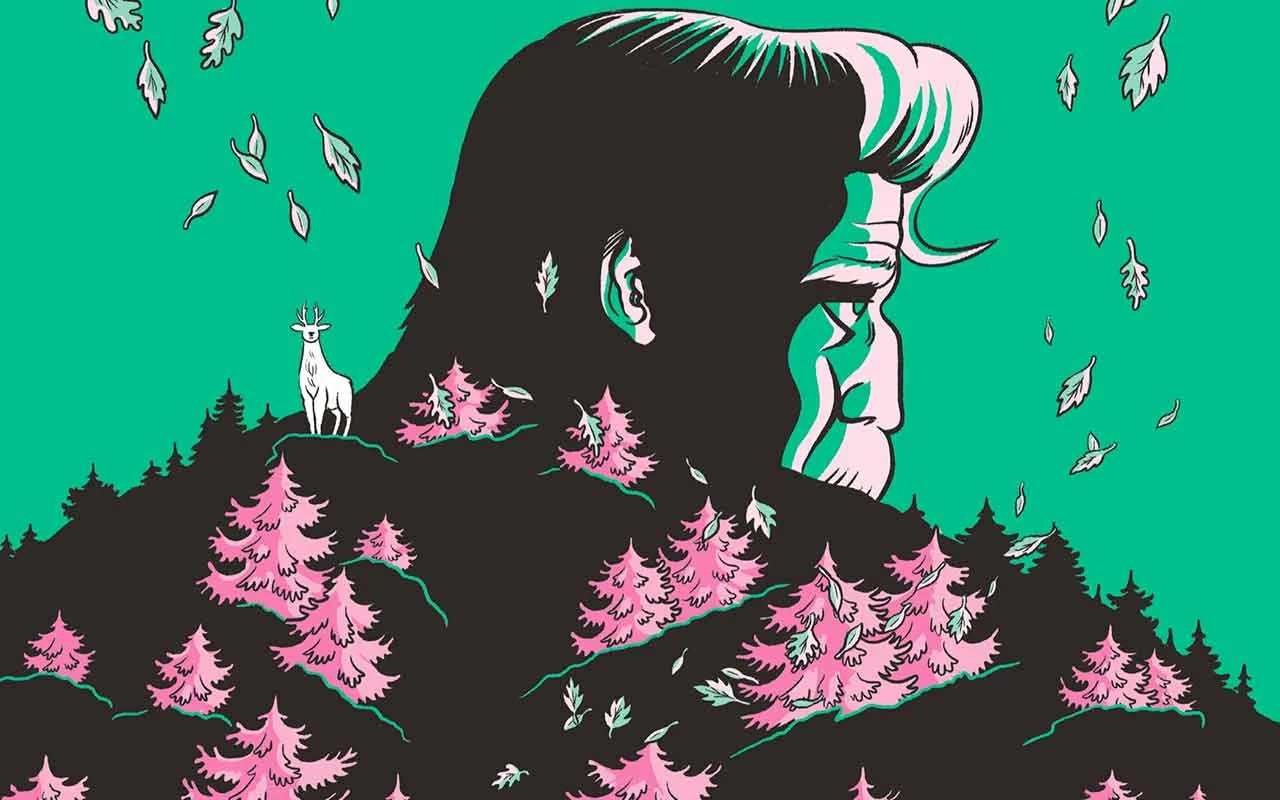Writer and artist Simon Bournel-Bosson is tackling a lot with his debut graphic novel, Trumpets of Death, which is in stores now from Graphic Universe. In the book, and spoilers past this point, a young boy is left to live with his grandfather, who is rough, borderline abusive, and more interested in hunting than taking care of his grandson. Which is when the kid grabs a magic mushroom and turns into a deer.
“Comprehension between Antoine and his grandfather is impossible,” Bournel-Bosson told Comic Book Club over email. “Fantasy then comes to the rescue to stage what comes next. Thanks to metaphors and metamorphoses, I can suggest so much more.”
To find out more about the surreal, beautifully drawn book, read on.
Comic Book Club: To jump right into the content of the book, I found it fascinating that you begin with what seems like a slice-of-life tale, before veering into magical realism. How do you know when to pull the lever back, that you’ve had enough setup of the real before jumping into the magical?
Simon Bournel-Bosson: That’s a very good question. I think the lever is pulled when reality is no longer sufficient to continue the story. When it’s a dead end of unspoken words and a lack of communication.
Comprehension between Antoine and his grandfather is impossible. Fantasy then comes to the rescue to stage what comes next. Thanks to metaphors and metamorphoses, I can suggest so much more. I can simply show that Antoine “changes,” that he grows. That he seeks a new balance within a new environment. A balance that his grandfather compromises during this hunting trip. His shadow, his patriarchal heritage, follows him. He will have to confront it to free himself from it.
Paradoxically, reality is sometimes insufficient to explain things. Because not everything necessarily comes through in words or demonstrations.
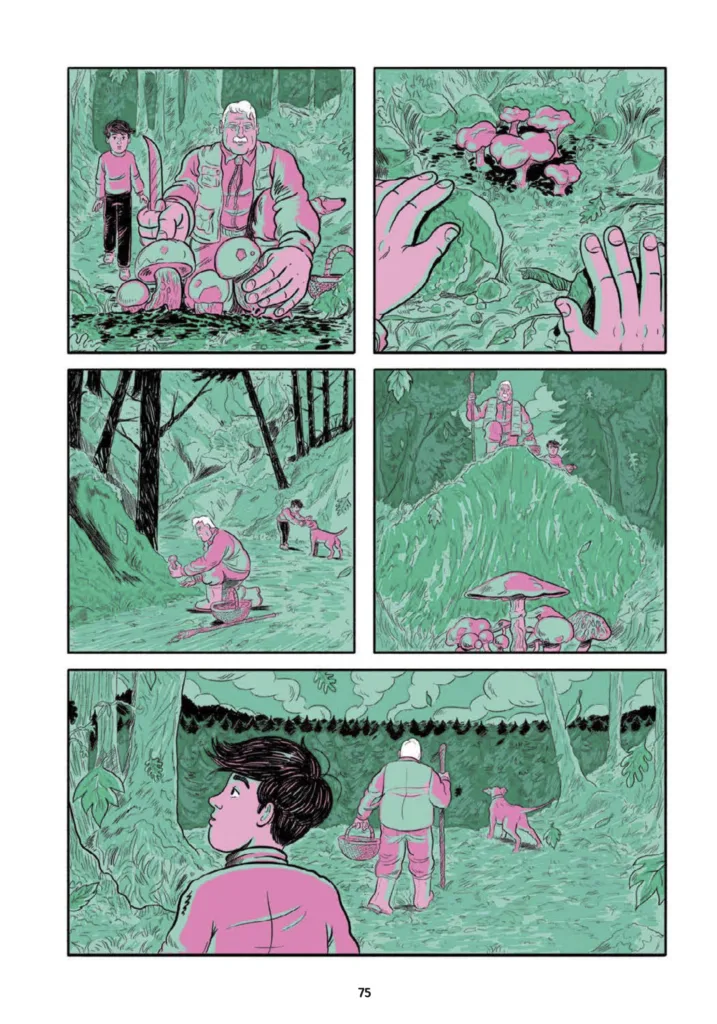
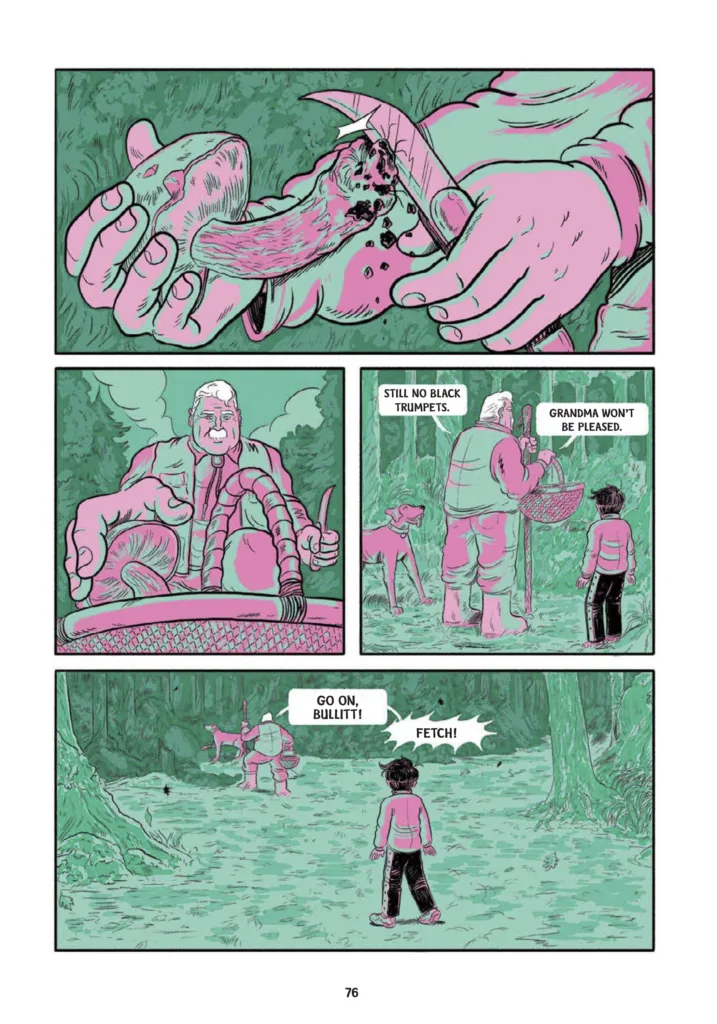
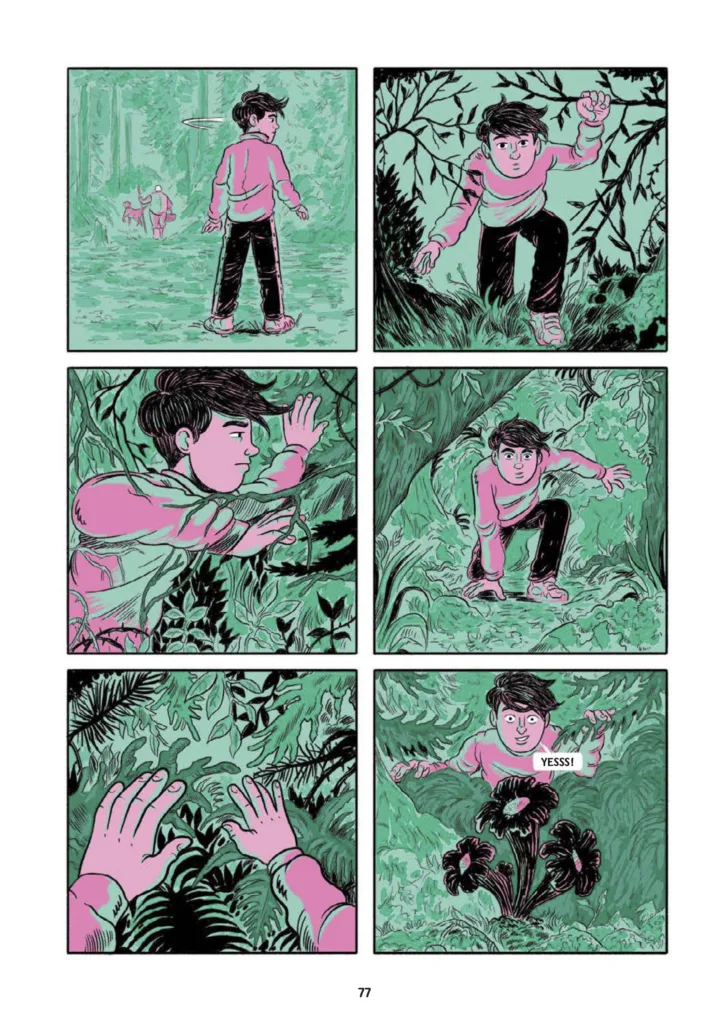
Was there anything you were inspired by here? I found this vaguely reminiscent of William Steig’s Sylvester and the Magic Pebble, but curious to hear what you were calling on.
I don’t know this book! I’ll look into it. The film The Bear by Jean Annaux was my main inspiration.
In the film, a little bear who has lost his mother must survive the forest and predators. What surprised me when I saw it as a child was that the voice dubbing of the bear’s cries was done by a human. I always felt as if a small child was inside this little bear. This voice dubbing created a strong sense of empathy for him. We could identify with him. We could put ourselves in his shoes.
Why mushrooms? What do they represent to you?
Mushrooms are a wonderful childhood memory. I used to go looking for them with my sister and my grandfather. Each time, it was like a treasure hunt, a quest. The Trumpets of Death were the hardest to find, and therefore they were the Holy Grail. The names of the champions evoke a powerful imagery, even though they’re something tangible. There’s a fantastical aspect to mushrooms, something that transports us to another universe.
For me, they represent something mysterious, and at the same time, something comforting in my memories.
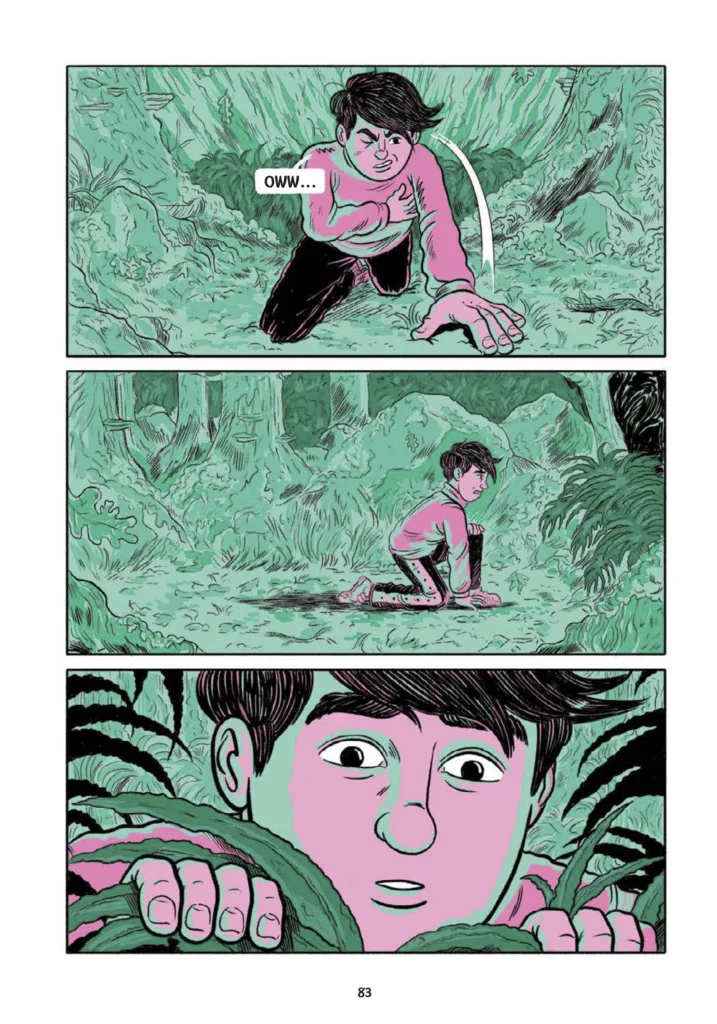
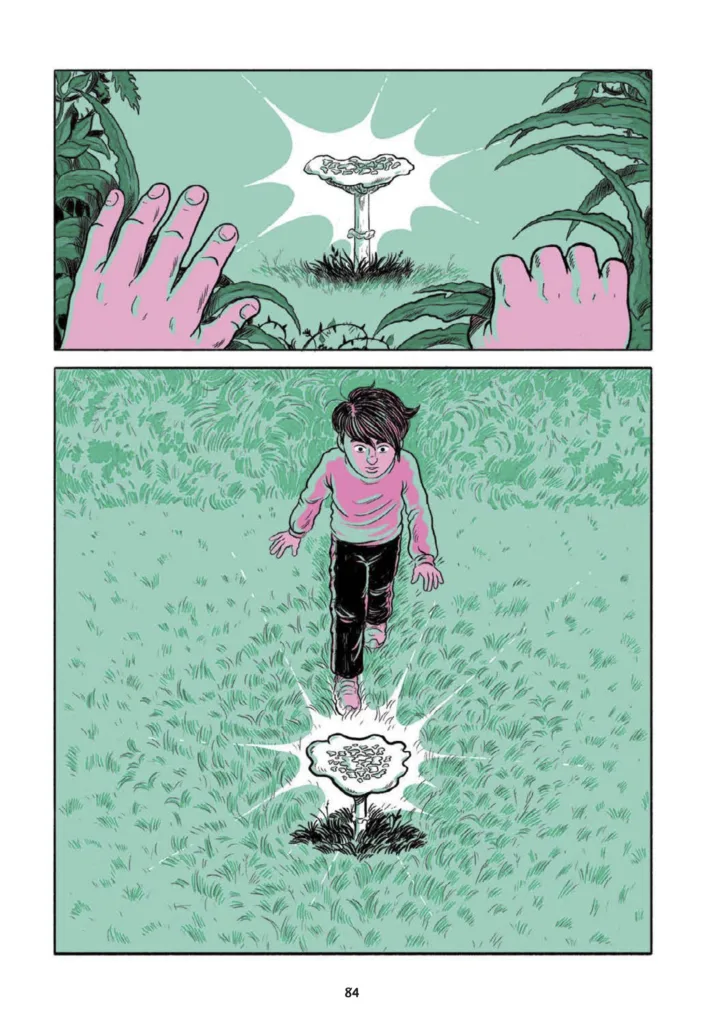
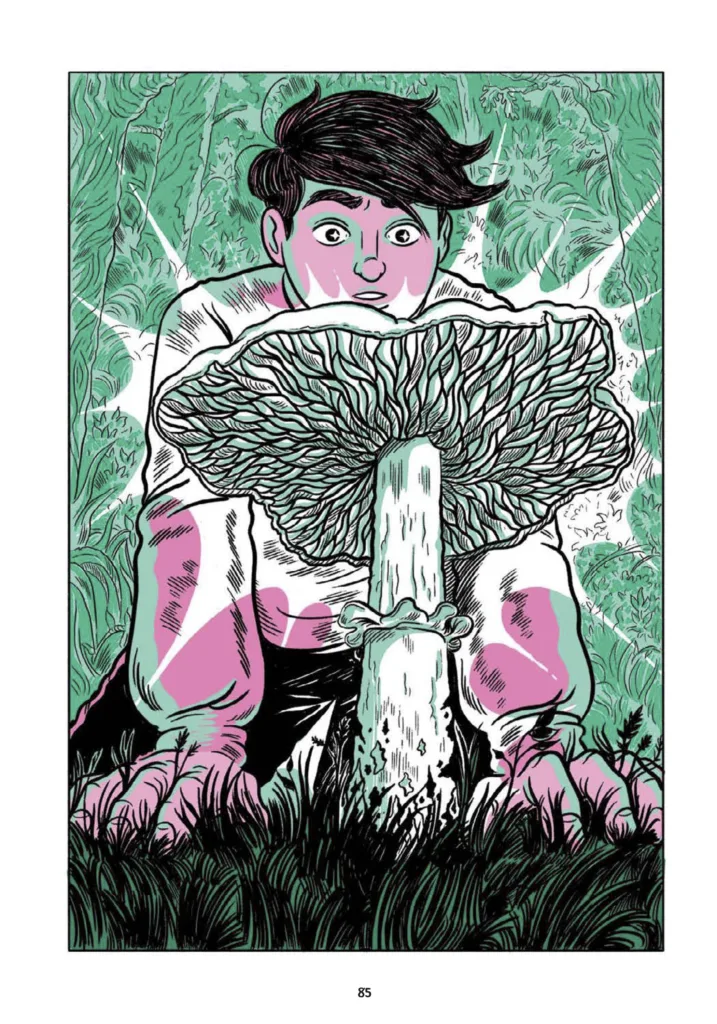
How much research was involved in getting the mushrooms right, visually?
I didn’t want the mushrooms to be too realistic.
For the magic mushroom that transforms Antoine, I had in mind this idea of a moving pattern on top. This scribble space that suggests what Antoine will transform into. You can see it on the double page spread; we see the silhouette of a deer’s head on top of the mushroom.
There’s a lot left unsaid in this book, and unresolved — at least from a plot perspective. Emotionally, you do tie it up. But when it comes to the plot, do you have ideas of what happens at the end to the grandfather, the kid’s family, etc? Or is that not as important?
I intentionally leave parts of the story unanswered because, for me, they distract from the real plot. Namely, the relationship between Antoine and his grandfather. The clash between the new generation and the old. All the other elements of the story, like the grandfather’s death or the parents’ absence, I didn’t want to rule things out or freeze them. Because I simply think my answers would have been disappointing, whereas it’s so much more enjoyable when everyone gives their own answer with their own sensitivity. I think that’s what makes us continue to think about a story after we’ve left it. What stays with us and stays with us.
I have my own answers to what happens to the grandfather and the parents. But I prefer to keep them to myself!
The layouts and colors are lovely throughout, much simpler and more controlled before the magical scenes… What was it like changing up your style for these two parts? What was challenging?
I think it’s difficult not to let your drawing evolve over so many pages and so much time.
The style inevitably evolves because you gradually get to grips with the characters. The lines are more flexible and supple.
In The Trumpets, the drawing is initially more detailed and fixed. I think this was to establish a dramatic and realistic aspect.
In the second part, it’s much more dynamic, supple, and flexible, because Antoine is constantly changing. It’s no longer about words, but about action.
I also think I’ve gotten rid of the idea of proving I know how to draw.
At first, you want to do a lot. And then the more you progress, the more you forget this notion of proving.
To simply serve the story. You get rid of the superfluous.
Trumpets of Death is in stores now from Graphic Universe.
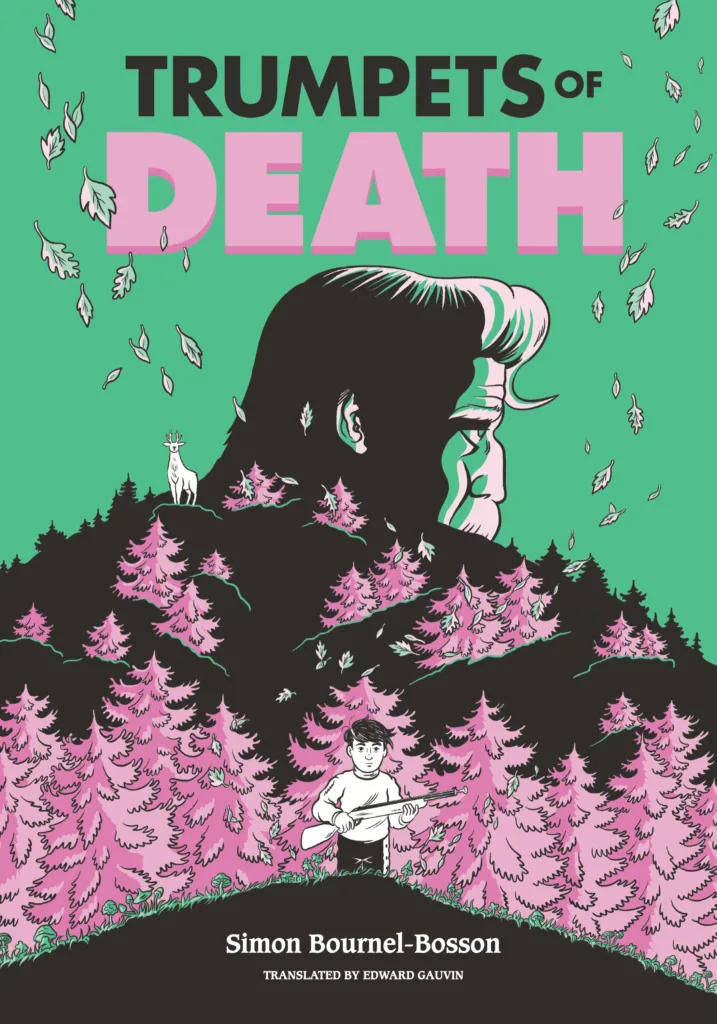
Comic Book Club Live Info:
Discover more from Comic Book Club
Subscribe to get the latest posts sent to your email.

